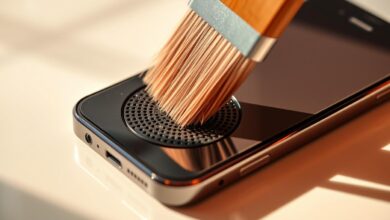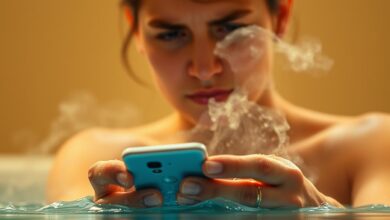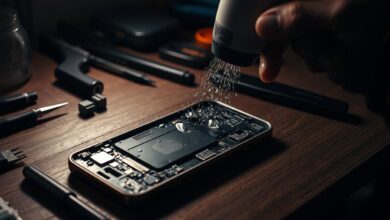Sound to Get Water Out of Phone
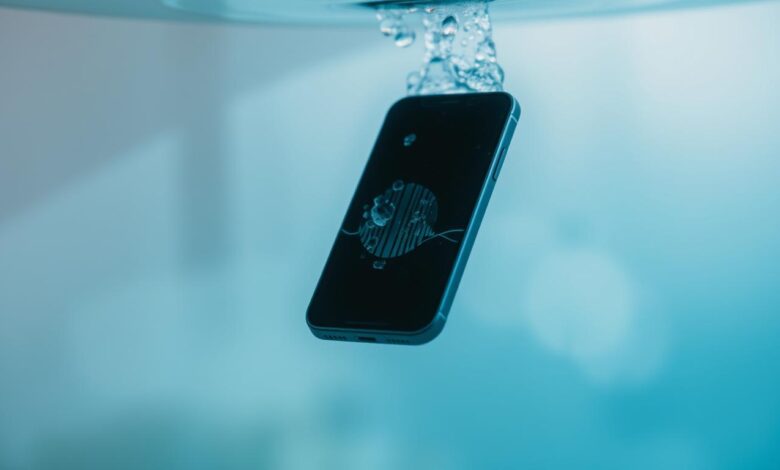
Water damage can make your phone useless. It’s important to act fast to lessen the harm. One clever way to save your device is by using sound waves to expel water. This method creates specific sounds that push water out of your phone’s parts.
I’ll show you how to use sound to fix your water-damaged phone. The idea is simple: certain sounds can shake water out of your device. You can make these sounds with a tone generator app, like the one on the App Store.
Key Takeaways
- Acting quickly is crucial to minimize water damage to your phone.
- Sound waves can be used to expel water from your device.
- Tone generator apps can produce the necessary frequencies.
- Specific frequencies can help dislodge water from internal components.
- Using sound to rescue your phone is a simple and innovative method.
Understanding the Problem of Water in Phones
Water and phones don’t mix well. Knowing the risks of water damage is key for phone users. Water can cause malfunctioning components or make a phone useless.
Why Water Damage is a Concern
Water damage is a big worry. It can lead to corrosion of internal parts, causing permanent harm. The longer water stays in the phone, the worse the damage gets. Learning DIY phone water damage fixes is important.
Signs Your Phone is Water-Damaged
Spotting water damage early is crucial. It helps take quick action to lessen the damage. Look out for these signs:
- A malfunctioning touchscreen or unresponsive buttons
- Corrosion on the circuit board or other parts
- Water indicators that have changed color
- Audio problems, like distorted sound or no sound
Seeing these signs early can save you from a costly fix or a new phone.
Using Sound to Dislodge Water
Sound waves can help fix water damage in phones. They work by pushing water molecules away. This method is based on science, showing how sound affects liquids.
The Science Behind Sound Waves
Sound waves are vibrations that move through mediums like air or water. When they hit water in a phone, they might push it out. This happens because sound waves can make water molecules move.
Let’s look at how sound frequencies affect water. Some frequencies work better than others. For example, a certain range can make water move out of the phone’s speakers.
How Frequencies Affect Water
Different sound frequencies have different effects on water. Some make water molecules vibrate hard, pushing them off surfaces in the phone. For instance, a frequency of about 165 Hz is known to help remove water.
| Frequency (Hz) | Effect on Water |
|---|---|
| 165 Hz | Effective for water ejection from phone speakers |
| 200-400 Hz | Can cause vigorous vibration of water molecules |
| Above 1000 Hz | Less effective for water removal; may cause other effects like heating |
To check out different sound frequencies for water removal, visit TunePocket. They have a variety of sounds for this purpose.
Popular Sounds for Water Removal
Sound waves can be a powerful tool in dislodging water from your phone’s internal components. This method uses specific sound frequencies to create vibrations. These vibrations help to expel water.
Specific Frequencies to Try
Research shows that certain frequencies are better at removing water from phones. Frequencies between 100-200 Hz are often recommended. These low-frequency sounds can help dislodge water from the phone’s speakers and other internal components.
To apply this method, you can use a sound generator or a mobile app that produces the desired frequency. Make sure the volume is not too high. This could potentially damage your phone’s speakers.
How to Use Online Sound Generators
Online sound generators are a convenient way to produce the specific frequencies needed for water removal. To use these tools, simply search for “sound generator” or “frequency generator” online. You’ll find various websites offering this service.
When using an online sound generator, select a frequency within the recommended range and play it at a reasonable volume. It’s also a good idea to position your phone in a way that allows the sound waves to directly target the area where water is likely to be trapped.
While using sound to dry your phone, be patient and monitor your device’s response. If you notice any improvement, you can continue with this method. However, if your phone shows no signs of improvement or if the problem persists, it may be necessary to explore other phone water damage solutions.
Do’s and Don’ts of Using Sound for Water Removal
To avoid causing further damage to your phone, it’s crucial to understand the do’s and don’ts of using sound for water removal. This method, while innovative, requires careful application to be effective.
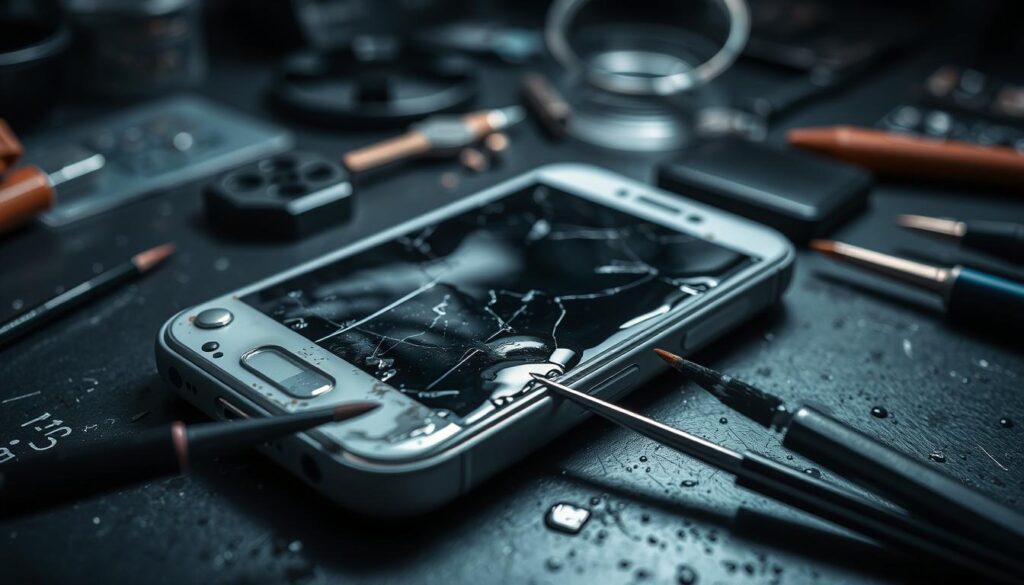
Safety Precautions
When trying to remove water from your phone using sound, keep the volume at a reasonable level. Extremely loud sounds can potentially damage the phone’s speaker. Start with lower frequencies and gradually increase as needed.
Another safety precaution is to avoid using sound waves for an extended period. Continuous exposure to sound can cause unintended damage to the internal components of your phone. Limit the duration of the sound exposure and monitor your phone’s response.
Tips for Effectiveness
For the sound method to be effective, ensure that your phone is properly positioned to allow water to exit. For instance, placing the phone’s charging port facing downwards can help gravity assist in removing the water.
It’s also beneficial to combine sound waves with other drying methods, such as gently shaking the phone or using a desiccant. This multi-faceted approach can enhance the effectiveness of water removal. As I always say, “A combination of methods can often yield better results than relying on a single technique.”
“The key to successfully using sound for water removal lies in patience and careful observation.”
To maximize the chances of successful water removal, it’s crucial to act quickly and follow the guidelines outlined above. If you’re unsure about the process or if your phone continues to malfunction, consider seeking professional help for water damaged phone repair or advice on how to fix water damaged phone.
Alternative Methods to Drying Your Phone
There are many ways to dry your phone besides using sound. Sound waves can help get rid of water, but other methods can dry your phone completely.
Rice and Silica Gel Techniques
Two common DIY methods use rice or silica gel to dry a wet phone. Both methods use a desiccant material to soak up moisture from the phone.
Rice Method: Put your phone in a container filled with uncooked rice. The rice pulls out moisture from your phone. But, rice can leave dust and starch, which might harm your phone more.
Silica Gel Method: Silica gel packets are better and cleaner than rice. They are made to soak up moisture and can be found in many products. Put your phone in a sealed container with silica gel packets to dry it.
| Method | Effectiveness | Potential Drawbacks |
|---|---|---|
| Rice | Moderate | Dust and starch residue |
| Silica Gel | High | May require purchasing silica gel packets |
Using a Vacuum Cleaner
You can also use a vacuum cleaner to remove water from your phone. This method uses suction to pull out water. But, you need to be careful not to damage your phone’s inside parts.
Precautions: Use a low-suction setting and keep the vacuum nozzle away from your phone’s openings. This will help avoid more damage.
Prevention Tips for Future Incidents
To keep your phone safe from water damage, you need to act ahead of time. By taking the right steps, you can lower the chance of water harming your device.
Waterproof Cases and Accessories
Using waterproof cases and accessories is a smart move to avoid water damage. They act as a shield, keeping your phone dry even when it’s exposed to water. Make sure your case fits well and has a high water resistance rating, like IP68.
Also, think about using phone pouches or waterproof bags near water. They offer extra protection and are great for long water activities.
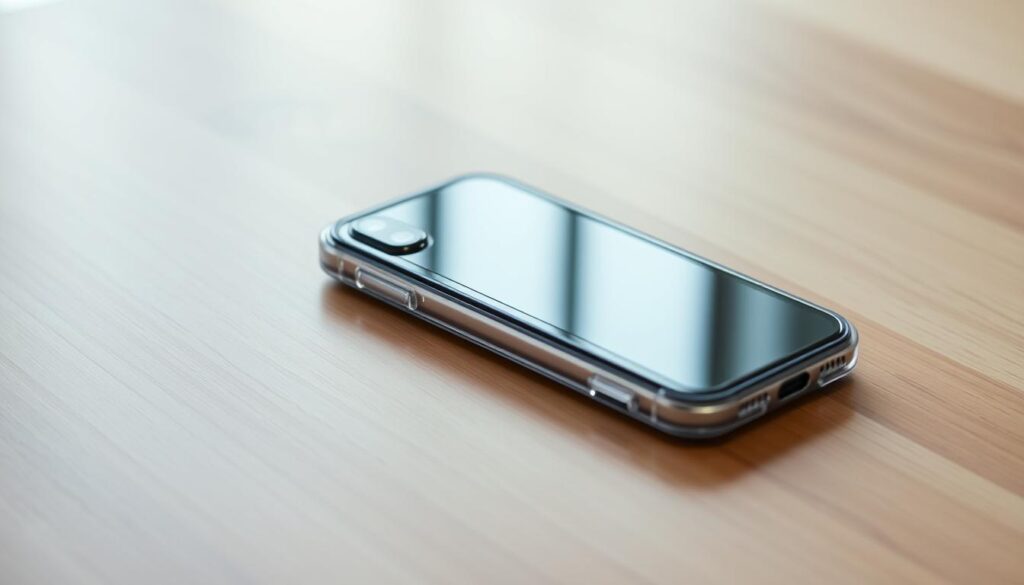
Safe Usage Near Water
Being careful where you use your phone can also prevent water damage. Try not to use your phone near water unless it’s really needed. If you must, keep it far from the water’s edge to avoid drops.
Also, be careful when using your phone in humid or wet places, like during rain or in bathrooms after a shower. Water vapor can be as dangerous as liquid water, so stay alert.
- Use a waterproof case or pouch.
- Keep your phone away from water’s edge.
- Avoid using your phone in humid or wet conditions.
Steps to Take Immediately After Getting Your Phone Wet
When your phone gets wet, every second is crucial. Knowing the right steps can save your device. Acting fast is key to prevent damage to your phone’s internal parts.
Powering Off Your Device
The first and most important step is to immediately power off your device. This stops short circuits that could harm your phone more. Don’t press any buttons or charge your phone until it’s dry.
Drying Techniques
There are several ways to dry your phone. Use a soft cloth or towel to gently pat the outside dry. You can also use a desiccant or uncooked rice to soak up moisture. But, be careful of dust getting into your phone’s openings.
Here is a comparison of different drying methods:
| Drying Method | Effectiveness | Potential Risks |
|---|---|---|
| Uncooked Rice | Moderate | Dust and starch particles may enter the phone |
| Desiccant | High | May not be readily available |
| Soft Cloth/Towel | Low to Moderate | May not absorb moisture from inside the phone |
For a phone water damage solution, act quickly and use the right techniques. If you’re not sure what to do or if your phone has been badly damaged, get professional help for water damage repair phone services.
Checking for Remaining Moisture
It’s important to check for moisture in your phone after it gets wet. Making sure your device is dry is key to avoiding more damage. This helps prevent long-term problems.
Indicators of Moisture in Your Device
There are signs that show if your phone has moisture. Look out for:
- Condensation under the screen or in the camera lens
- Water droplets in the SIM card slot or charging port
- Corrosion on the internal components
- Moisture indicators that have changed color
Most phones have special moisture indicators. These change color if your phone gets wet. Checking these indicators can tell you if your phone has been exposed to water.
| Indicator | Description | Action |
|---|---|---|
| Condensation under the screen | Visible water droplets or fog under the screen | Leave the phone to dry further or seek professional help |
| Water in SIM card slot | Visible water or corrosion in the SIM slot | Dry the SIM slot and consider professional assessment |
| Corrosion on internal components | Visible signs of rust or corrosion | Immediate professional repair is recommended |
Importance of Professional Assessment
If you’re not sure about the water damage or if your phone still doesn’t work, get a professional check. Experts can see the damage and fix your phone.
“Water damage can be tricky; even if your phone seems fine, there might be hidden problems. Only a pro can spot these.”
A pro can also tell you if fixing your phone is worth it or if it’s better to get a new one.
Preventing further damage is crucial. Regularly check your phone for moisture and act fast. This can save you from bigger problems later.
When to Seek Professional Help
If DIY fixes don’t work after your phone gets wet, it’s time to get help from a pro. Even sound methods might not fix all damage. Some issues are too big for home fixes.
Signs You Can’t Fix It Yourself
When your phone keeps acting up or shows water damage signs, it’s time for a pro. Common signs include a phone that won’t start, a screen that’s black or won’t work right, or parts that don’t work.
- Unresponsive touchscreen or buttons
- Visible corrosion or water damage indicators
- Audio issues or distorted sound
- Charging port or SIM card slot damage
Best Repair Options in the U.S.
In the U.S., you have many repair options. Authorized service providers use trained techs and genuine parts. Independent shops might be cheaper but still offer quality repairs.
When picking a repair service, look at warranties, repair costs, and reviews. It’s essential to choose a service that stands behind their work and uses quality parts. This ensures your phone works like new again.
User Experiences and Success Stories
A growing number of users have found success with sound-based methods for fixing water-damaged phones. This approach, though not common, has caught a lot of attention. It’s seen as a possible way to save devices damaged by water.
Testimonials on Using Sound for Water Removal
Many people have shared their positive experiences online. They talk about how certain sound frequencies helped get water out of their phones. For example, a user on a tech forum said using a 165Hz frequency for a few minutes got the water out. Their phone was saved.
“I was skeptical at first, but after trying the sound method, my phone was good as new. It was a simple, cost-effective solution.”
These stories highlight the potential of sound waves in fixing water-damaged phones. For more information, check out FixMySpeakers. It’s a resource for fixing water-damaged phones.
| Frequency Used | User Reports | Success Rate |
|---|---|---|
| 165Hz | Multiple users | High |
| 200Hz | A few users | Moderate |
| 100Hz | Several users | Variable |
Community Tips and Tricks
The community has shared tips for using sound to remove water from phones. Some suggest using different frequencies together for better results. Others recommend placing the phone on a flat surface to improve sound wave effectiveness.
Key Tips:
- Use a sound generator or a phone app designed for water removal.
- Experiment with different frequencies to find what works best for your device.
- Ensure the phone is powered off to prevent short circuits.
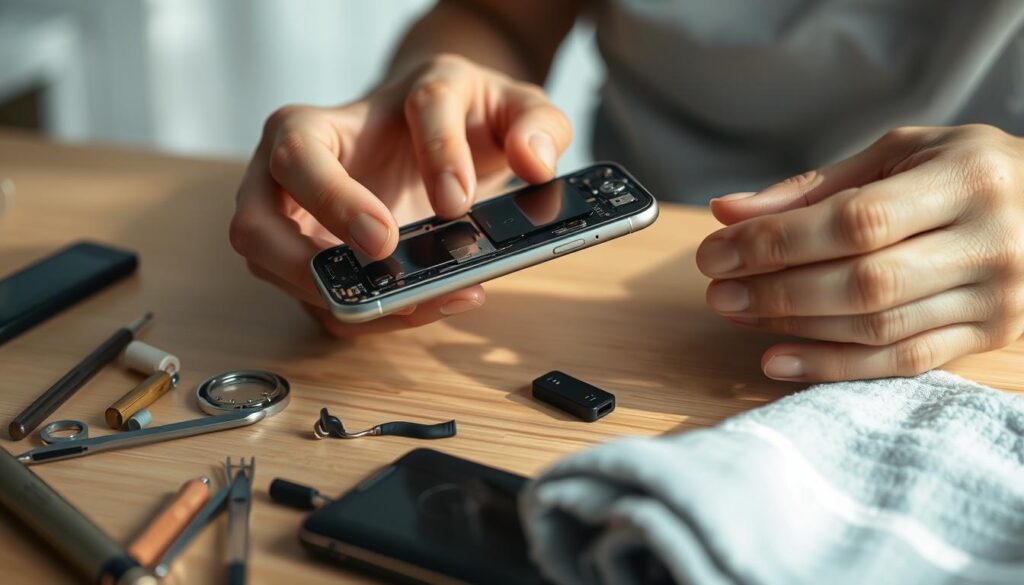
By using these tips and understanding the science behind sound waves, users can try a DIY phone water damage repair. While results can vary, the success stories make a strong case for trying this method before seeking professional help.
Conclusion and Final Thoughts
Water damage can harm our smartphones a lot. Using sound waves to remove water is a new method that works. By learning about sound waves and how to use them safely, you might save your phone.
Effective Techniques for Water Removal
There are ways to remove water from your phone, like using sound frequencies. Online tools can help too. But, it’s important to know what to do and what not to do to avoid more harm.
Protecting Your Device
It’s key to know how to get water out of your phone. But, stopping water damage before it happens is even better. Use waterproof cases and watch out for your phone near water.
If your phone does get wet, knowing when to get help is important. Getting professional water damage repair can save your phone.
FAQ
What is the best sound frequency to get water out of my phone?
The best sound frequency for removing water from your phone is between 100 Hz to 200 Hz. These frequencies can help dislodge water from your phone’s components.
Can using sound to get water out of my phone cause further damage?
Using sound to remove water from your phone is usually safe if done right. Just make sure the volume isn’t too high to avoid damaging your phone’s speakers.
How long should I play the sound to remove water from my phone?
The time needed to play the sound varies based on the water amount and your phone’s condition. Playing it for a few minutes to an hour can work. But, watch your phone closely and stop if you see any bad effects.
Are there any alternative methods to using sound for water removal?
Yes, you can use rice or silica gel to soak up moisture, or a vacuum cleaner to remove water. Each method works differently and should be used carefully.
Can I use sound to fix water damage on any phone model?
The sound method can work on many phone models, but its success depends on your phone’s design and water damage level. Also, make sure the sound isn’t too loud for your phone’s speakers.
What should I do immediately after my phone gets wet?
Turn off your phone, remove accessories, and dry the outside gently. Don’t charge or turn it back on until it’s completely dry.
How can I prevent water damage to my phone in the future?
Use a waterproof case, be careful near water, and have a backup phone. Regularly check your phone for moisture and dry it if needed.
When should I seek professional help for water damage?
If your phone shows signs of serious water damage like corrosion or moisture, seek professional help. This is especially true if your phone doesn’t work after trying to dry it.
Can I use online sound generators for water removal?
Yes, online sound generators can help produce the right frequencies for water removal. Just make sure to use a trusted site and follow the frequency guidelines.
Are there any DIY phone water damage repair techniques I can try?
Besides sound, you can try using rice or silica gel to dry your phone, or a vacuum cleaner carefully. But, be careful not to cause more damage.
